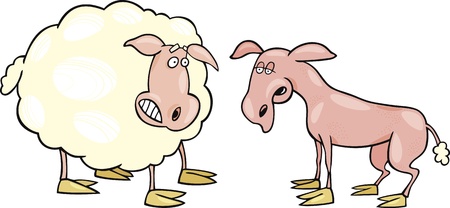Introduction to Popular UK Rabbit Breeds
When it comes to keeping rabbits as cherished companions, Britain boasts a delightful variety of breeds that capture the hearts of pet lovers nationwide. From classic favourites found in countryside cottages to newer breeds gaining popularity in bustling city flats, understanding which rabbit breeds are most commonly kept across the UK is key for any aspiring or seasoned bunny owner. The iconic British Lop and lively English Spot have long been staples in many households, prized for their gentle natures and distinctive looks. Meanwhile, breeds such as the Mini Rex and Lionhead are rising stars on the scene, adored for their plush coats and playful personalities. Each breed brings its own quirks, charms, and care requirements—making it essential to consider both traditional choices and up-and-coming varieties when planning your rabbit-friendly home. Whether you’re drawn to the robust character of a Continental Giant or the petite elegance of a Netherland Dwarf, getting to know these popular UK breeds is the first hop towards providing them with a happy and healthy life.
2. The British Lop and Other Classic Breeds
When it comes to rabbit keeping in the UK, heritage breeds like the British Lop hold a special place in the hearts of many enthusiasts. These classic breeds are not only prized for their distinctive looks but also for their gentle temperaments and adaptability to British lifestyles.
Spotlight on the British Lop
The British Lop, known for its large, loppy ears and robust physique, is one of the most beloved traditional breeds in Britain. This breed’s easy-going nature makes it an ideal pet for families, singles, or even older adults looking for a calm companion. Their soft fur and expressive eyes have endeared them to generations of Britons.
Key Characteristics and Temperament
| Breed | Physical Traits | Temperament | Ideal Housing Needs |
|---|---|---|---|
| British Lop | Large size, broad head, long lopped ears, dense coat | Mellow, affectionate, enjoys human interaction | Spacious hutch with secure run, soft bedding, sheltered from wind/rain |
| English Spot | Sleek body, distinctive markings along spine and nose | Lively, curious, playful | Roomy enclosure with enrichment toys and ample space to explore |
| Mini Rex | Compact build, velvety short fur, upright ears | Sociable, gentle, intelligent | Cosy indoor/outdoor space with hiding spots and regular social time |
| Dutch Rabbit | Small-medium size, characteristic white blaze on face and neck banding | Friendly, alert, adaptable to children | Comfortable hutch or cage with soft flooring and daily exercise outside enclosure |
Cherished Companions in British Homes
The affection for these classic breeds goes beyond their appearance. The British Lop and its counterparts have been part of local folklore and rural life for centuries. Their calm disposition means they often get along well with other pets and children—making them quintessential family members in many UK households. For those considering adopting a heritage breed rabbit, understanding their unique housing requirements is crucial for ensuring a happy and healthy life. From sturdy weatherproof hutches to secure garden runs that offer plenty of space to hop about safely (especially given the unpredictable British weather), providing the right environment is key to keeping these cherished rabbits content.

3. Miniature Breeds: Perfect for Cosy Homes
When it comes to city living in the UK, many pet lovers turn to miniature rabbit breeds such as the beloved Mini Lop and the Netherland Dwarf. These compact companions are particularly well-suited to the British urban lifestyle, where space is often at a premium and pet-friendly flats are common. Their small size makes them highly adaptable and easy to accommodate, making them a favourite choice for families and individuals alike.
Why Miniature Breeds Are So Popular in the UK
The appeal of breeds like the Mini Lop and Netherland Dwarf lies not just in their adorable appearance, but also in their gentle temperaments and playful personalities. They fit perfectly into modern British homes—whether thats a stylish London flat or a cosy Manchester studio. With more people living in apartments, these rabbits offer companionship without demanding large outdoor hutches or gardens.
Unique Housing Needs in British Flats
Although these bunnies are smaller than their larger cousins, they still require thoughtful housing arrangements. For UK flat-dwellers, providing a safe indoor enclosure is essential. Look for spacious cages or exercise pens that allow your bunny to hop around comfortably—aim for at least 1.5m by 0.6m of floor space with enough height for standing up on their hind legs. British weather being what it is, many owners opt to keep their rabbits indoors year-round, ensuring they have soft bedding, plenty of hideaways, and regular supervised time outside their enclosure for exercise.
Enrichment and Social Interaction
Miniature rabbits thrive on interaction and stimulation. In a typical UK home, its important to provide toys, tunnels, and chew-safe items to keep them entertained. Social creatures by nature, they enjoy spending time with their human companions or even a bonded bunny friend. This helps prevent boredom and promotes healthy behaviours—even in the cosiest city flat.
4. Understanding Unique Housing Needs
When it comes to providing the best home for your rabbit, understanding their specific housing requirements is crucial – especially given the UK’s ever-changing weather and the diversity of breeds commonly kept here. Whether your pet is a compact Netherland Dwarf or a large, laid-back British Giant, their comfort, health, and happiness rely on thoughtful accommodation. Below, you’ll find a practical guide that covers general principles alongside breed-specific needs, focusing on space, enrichment, safety, and climate considerations tailored to the UK.
General Housing Requirements for All Breeds
| Requirement | Minimum Standard | UK-Specific Consideration |
|---|---|---|
| Space | At least 3m x 2m x 1m (L x W x H) per pair of rabbits | Larger breeds may need additional room; always consider vertical space for hopping and standing up |
| Enrichment | Tunnels, platforms, chew toys, hiding spots | Rotate toys regularly to prevent boredom during long rainy spells |
| Safety | Escape-proof fencing and predator-proofing essential | Reinforce hutches against foxes and badgers; check latches after strong winds or storms |
| Climate Control | Shelter from wind, rain, extreme heat or cold | Add insulation in winter (e.g., hutch covers), provide shaded areas in summer; ensure good ventilation year-round to avoid dampness and respiratory issues |
Breed-Specific Considerations
Certain breeds have unique needs based on size, fur type, and temperament. Here’s a quick breakdown:
| Breed Example | Special Housing Needs | Tips for UK Owners |
|---|---|---|
| Dutch Rabbit (Small-Medium) | Might squeeze through small gaps; loves to dig and explore | Check enclosure for escape routes; offer digging boxes indoors during wet weather |
| Lionhead (Long Fur) | Prone to overheating in hot spells; fur can get matted if wet or dirty bedding is left unchecked | Keep bedding dry; groom regularly; place housing away from direct sunlight in summer months like July-August |
| British Giant (Large Breed) | Needs extra floor space and sturdy construction to support weight; sensitive feet require soft flooring materials (e.g., grass mats) | Avoid wire mesh flooring; reinforce run frames against strong winds common in coastal regions or Scottish Highlands |
| Lop Breeds (e.g., Mini Lop) | Ears can drag in mud or soiled bedding; more susceptible to ear infections if living in damp conditions | Keep hutch well-drained; check ears regularly during wet seasons like autumn and early spring in the UK |
Enrichment & Socialisation Tips for British Weather
The unpredictable British climate means rabbits might spend more time indoors or undercover than their continental cousins. Rotate toys frequently, provide safe indoor runs when outdoor access isn’t possible, and keep things interesting with cardboard castles and tunnels made from local hay bales. Always ensure access to fresh water — bottles can freeze in winter, so check twice daily when temperatures drop.
5. Creating a Rabbit-Friendly Garden
Transforming your British back garden into a rabbit haven can provide your furry friends with the perfect blend of safety, stimulation, and space to express their natural behaviours. Different rabbit breeds, especially those popular in the UK such as the Mini Lop or the English Spot, benefit greatly from time outdoors but require thoughtful planning to ensure they remain secure and happy.
Rabbit-Proofing Your Garden
Begin by thoroughly checking your fencing for any gaps or weak spots—rabbits are notorious diggers and can squeeze through surprisingly small spaces. Consider installing buried mesh skirting (at least 30cm deep) around your garden perimeter to prevent escapes and deter predators like foxes. Remove any toxic plants, such as foxgloves or daffodils, which are common in British gardens and can be harmful if nibbled.
Outdoor Hutch Ideas for British Weather
A robust outdoor hutch is essential for sheltering your rabbits from the UKs unpredictable weather. Opt for a weatherproof wooden hutch raised off the ground, ideally with a run attached for exercise. Position the hutch in a shaded area during summer and shield it from prevailing winds using hedges or fences. For extra insulation during chilly months, line the sleeping area with hay and use tarpaulin covers when needed.
Encouraging Natural Behaviours Safely
British rabbits love to forage, dig, and explore. Create digging boxes filled with soil or sand to satisfy their burrowing instincts without destroying your flower beds. Scatter safe herbs like parsley or dandelion leaves around the run for them to discover. Adding tunnels made from willow branches or sturdy pipes encourages play and mimics wild warrens, keeping your rabbits mentally stimulated and physically active.
Key Takeaways for a Happy Bunny Garden
Every breed has its quirks—larger breeds need more space while active breeds appreciate extra enrichment. By rabbit-proofing your garden, investing in a suitable hutch, and providing opportunities for natural behaviours, youll give your UK bunnies a wonderful outdoor life thats both safe and full of adventure.
6. Weatherproofing and Seasonal Care
British weather is famously unpredictable, which means rabbit owners need to stay on their toes when it comes to providing a safe and comfortable environment for their bunnies throughout the year. Whether you have a sturdy British Giant or a delicate Mini Lop, understanding how to adapt your rabbits living space for shifting seasons is essential.
Rain, Wind, and Cold: Outdoor Adjustments
For rabbits kept outdoors, choose hutches raised off the ground to avoid flooding during heavy rains. Ensure roofs are waterproof and sloped to allow water runoff. Draughts can be particularly chilling, so seal any gaps with non-toxic materials but maintain some ventilation to prevent condensation and damp. Adding extra straw or hay provides warmth and insulation in winter—just be sure to change bedding regularly to keep things dry.
Summer Heatwaves and Shade Solutions
When the UK experiences those rare heatwaves, overheating becomes a risk, especially for fluffy breeds like Lionheads. Position outdoor hutches in shaded areas and consider adding reflective covers or tarpaulins. Frozen water bottles wrapped in towels placed inside the hutch can help keep your rabbits cool. Always ensure fresh water is available, as dehydration can happen quickly during unexpected warm spells.
Cosy Indoors: Bringing Rabbits Inside
If the forecast is especially harsh—think snowstorms or torrential rain—bringing your rabbits indoors may be the safest option. Designate a bunny-safe area with plenty of space to hop around, making sure electrical cords and houseplants are out of reach. Use puppy pads or litter trays for easy clean-up and offer familiar toys or hides to reduce stress during their indoor adventure.
Year-Round Vigilance
No matter the season, regular checks are key. Inspect hutches for leaks after storms, monitor temperatures during cold snaps, and adjust setups as needed. By staying proactive and adapting their environment to the ever-changing British climate, youll ensure your rabbits—whatever their breed—stay happy, healthy, and ready for whatever weather comes their way.


